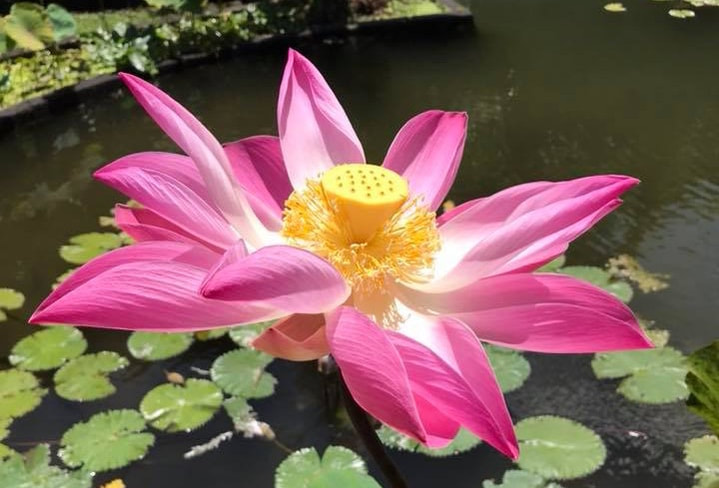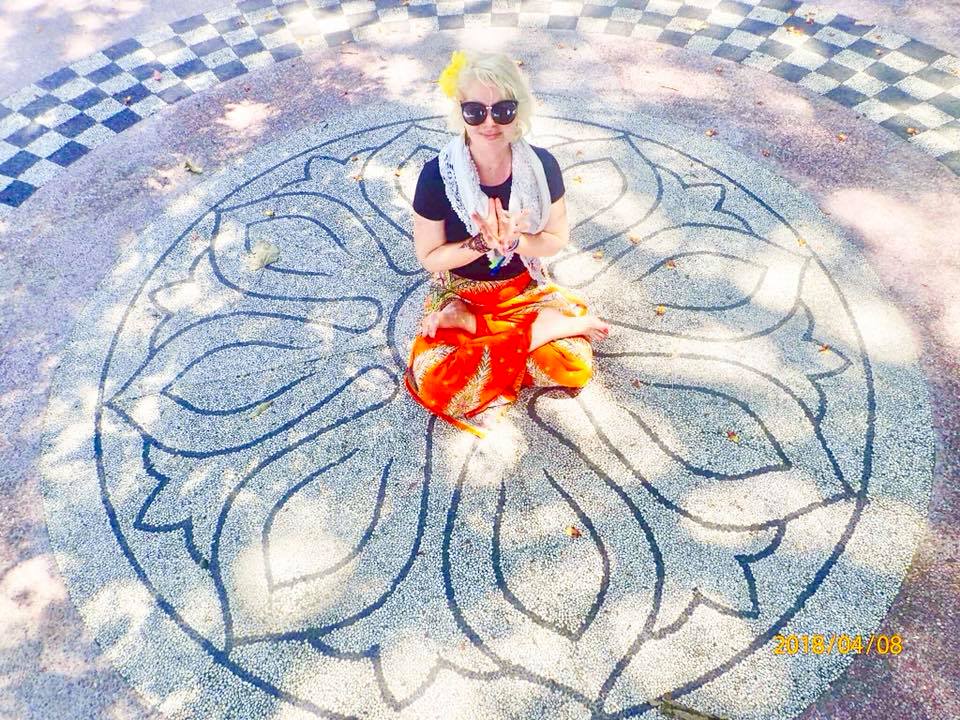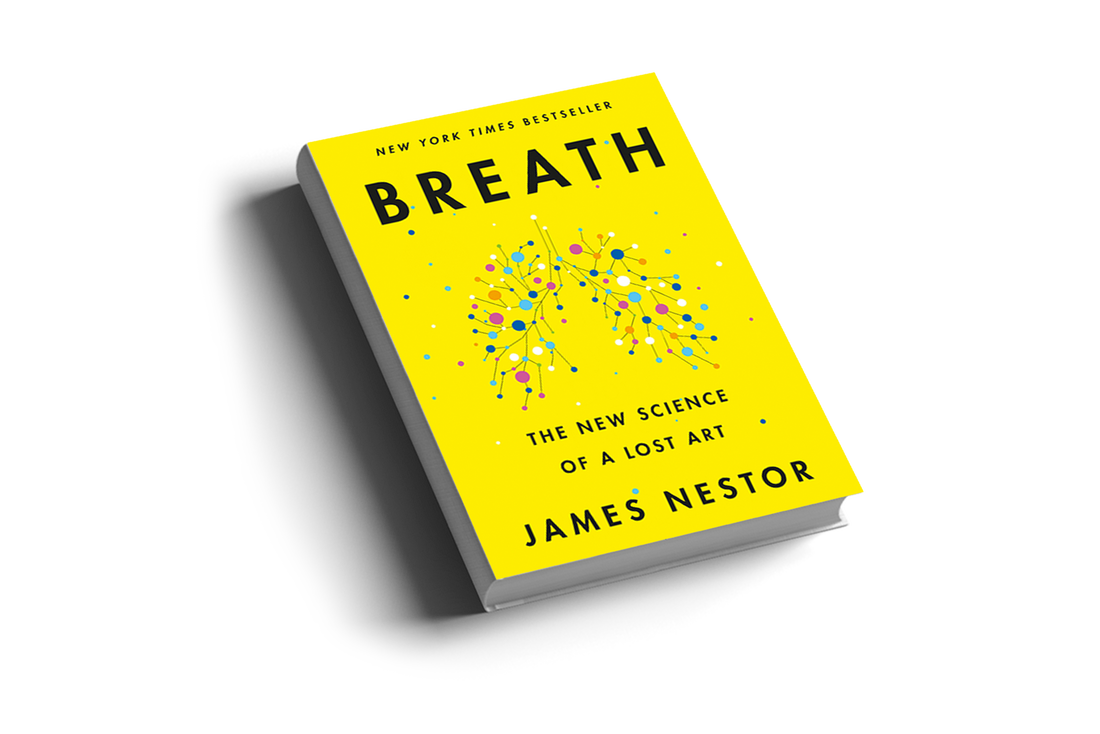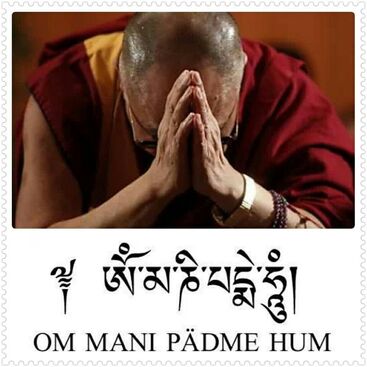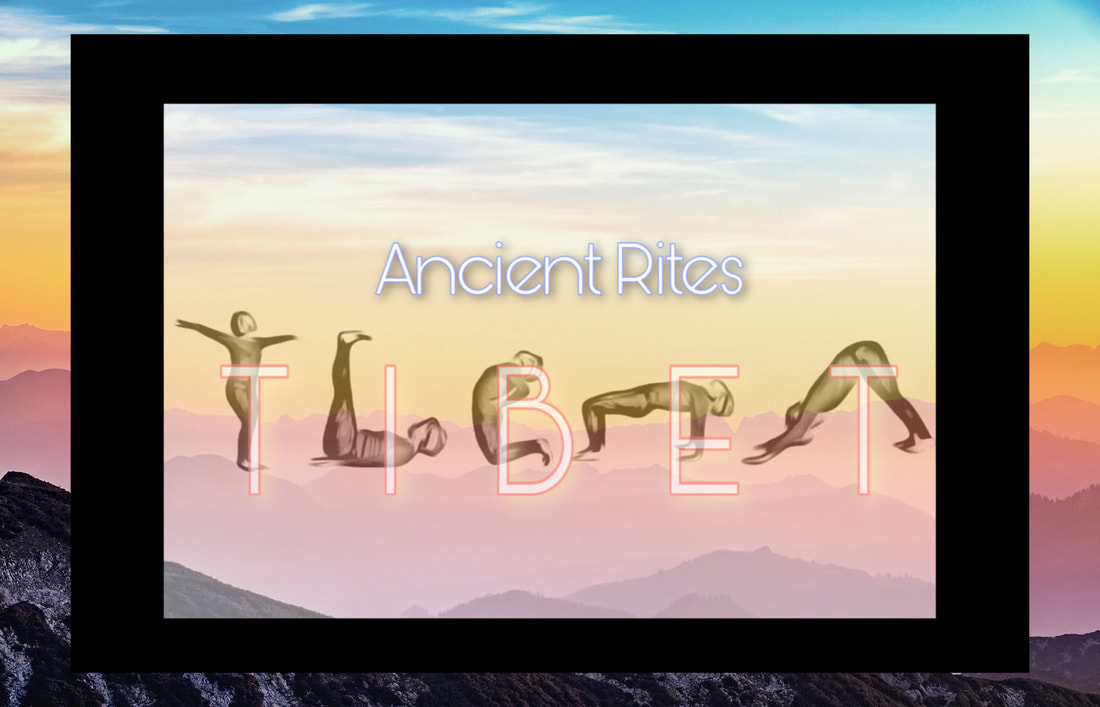Hannah Faulkner on Everest Base Camp Trek 2017
OM MANI PADME HUM
Bright white relief letters wrap around the black painted boulders. This script pops out at me, but at the same time blends in with the contrasting snow-capped mountains and dark shadows cast from the bright sun. My Everest Base Camp Trek Guide points out these Mani stones that repeat the sacred chants, especially the most popular mantra, “Om Mani Padme Hum.”
Meaning
Even the basic interpretation of this simple, yet densely complex phrase from Tibetan Buddhism has multiple implications. Some say it means “Praise to the Jewel in the Lotus,” but other say “The Jewel is in the Lotus, or “I am the Jewel in the Lotus.” Further, some understandings even state, “O, she with the jewel in her lotus" that invokes a female deity named Manipadmi.
The one that makes most sense to me is “I am the Jewel in the Lotus.” This explanation is stated as an affirmation that refers to our divine nature as the Jewel. We are all connected at the very core by a oneness, a very high frequency of Universal Intelligence and Love and Light. When we say “Namaste”, we are referring to this divinity and brightness of the Jewel: “My light honors and bows to your light.” We can access this Jewel when we remove layers of delusion that block it. Meditation and yoga are practices that work to remove these layers to find a pure state of mind.
The one that makes most sense to me is “I am the Jewel in the Lotus.” This explanation is stated as an affirmation that refers to our divine nature as the Jewel. We are all connected at the very core by a oneness, a very high frequency of Universal Intelligence and Love and Light. When we say “Namaste”, we are referring to this divinity and brightness of the Jewel: “My light honors and bows to your light.” We can access this Jewel when we remove layers of delusion that block it. Meditation and yoga are practices that work to remove these layers to find a pure state of mind.
Lotus Flower Symbolism
The history of Lotus flower symbolism spans thousands of years from India and Australia to Egyptian hieroglyphics and Greek folklore. Because the lotus flower rises pristine from the murky water each morning, it is often viewed as a symbol of purity. In the evening, it returns submerged into the mud, yet reawakens and blossoms above water petal by petal repelling the dirt and water the next morning. Thus it also symbolizes strength, resilience, rebirth, and transcendence. In the case of this mantra, the Lotus flower represents the inner wisdom of enlightenment that can be found after we are reborn through meditation.
Lotus Pose
One way to embody this mantra is by sitting in Lotus Pose, or “padmasana” in Sanskrit. This deep hip-opening stretch aids in balancing the root chakra as it allows the base of the spine to root into the earth.
I ground into my sit bones and cross my right foot up and over my left thigh while bringing my left foot up and over my right thigh. Inching both feet closer to my hip creases, I reach my spine tall, lower my shoulders, and level my chin parallel to the earth.
I ground into my sit bones and cross my right foot up and over my left thigh while bringing my left foot up and over my right thigh. Inching both feet closer to my hip creases, I reach my spine tall, lower my shoulders, and level my chin parallel to the earth.
Lotus Mudra
Further, I gather my hands to the lotus mudra. Wrists pressed together, along with my thumbs and pinkies, as the rest of my fingers outstretch like the petals of a blossomed flower.
Breath as Prayer
According to James Nester in his remarkable book, Breath: The New Science of a Lost Art, “The perfect breath is this: Breathe in for about 5.5 seconds, then exhale for 5.5 seconds. That's 5.5 breaths a minute for a total of about 5.5 liters of air.” Science confirms that an ideal respiration rate of five to six breaths per minute equals five to six seconds to inhale and five to six seconds to exhale. This lowers heart rate and blood pressure while feeding more oxygen to our brains.
Ironically, when Buddhist monks chant Om Mani Padme Hum, the six-syllable phrase usually lasts six seconds as the exhale and they inhale for six seconds in between.
Furthermore, “Many of the world’s spiritual traditions have practices that train the mind to both slow respiration and even it out…This ideal breath is just like a prayer.” For example, reciting the Ave Maria prayer slows respiration to almost exactly six respirations per minute. The traditional chant of “Om”, the sacred sound of the universe, takes six second to sing (AUM) with a pause of about six seconds to inhale as well. The “sa ta na ma” chant, one of the most extensive techniques in Kundalini yoga, also take six seconds to vocalize, followed by six seconds to inhale.
Ironically, when Buddhist monks chant Om Mani Padme Hum, the six-syllable phrase usually lasts six seconds as the exhale and they inhale for six seconds in between.
Furthermore, “Many of the world’s spiritual traditions have practices that train the mind to both slow respiration and even it out…This ideal breath is just like a prayer.” For example, reciting the Ave Maria prayer slows respiration to almost exactly six respirations per minute. The traditional chant of “Om”, the sacred sound of the universe, takes six second to sing (AUM) with a pause of about six seconds to inhale as well. The “sa ta na ma” chant, one of the most extensive techniques in Kundalini yoga, also take six seconds to vocalize, followed by six seconds to inhale.
Additional Benefits
Beyond the benefits of ideal breath, Om Mani Padme Hum promotes uninterrupted flow of energy, especially in the chakras. This mantra can also be used for healing of oneself or others. The Dalai Lama suggests imagining that your chanting is reaching all the living beings in the Universe as they are being relieved from all sufferings. Repeating the phrase a sacred 21 or 108 times with a calm and focused mind brings optimal results.
6 Syllables
Finally, Om Ma Ni Pad Me Hum is known as the six-syllable chant. Each syllable also has a special meaning according to the Buddhist tradition. Like I mentioned previously, Om signifies divine sound which brings generosity by purifying the false ego. Ma symbolizes morals to purify the jealousy. Ni represents patience one needs to pursue the passion. Pad embodies diligence to purify ignorance. Me denotes renunciation to purify greed. Hum is wisdom to purify aggression.
Ancient Tibetan Rites
After my morning meditation with Om Mani Padme Hum, I like to flow through the Ancient Tibetan Rites. Five exercises with 21 repetitions each to revitalize the body.
Learn more in my blog: Ancient Tibetan Rites
Learn more in my blog: Ancient Tibetan Rites





